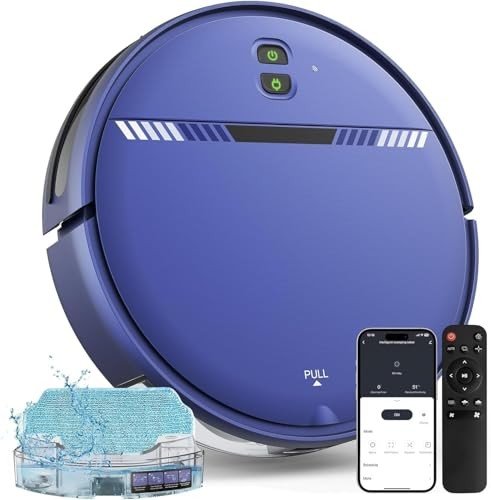
Automatic Vacuum Cleaner
Add a review FollowOverview
-
Founded Date June 10, 1994
-
Posted Jobs 0
-
Viewed 4
Company Description
5 Laws That Will Help In The Robot Vacuum Cleaner Industry
The Rise of Robot Vacuum Cleaners in Industrial Settings
In current years, the landscape of industrial cleaning has actually witnessed a considerable transformation with the introduction of robot Best roborock vacuum. These automated gadgets are not simply a novelty for homes; they have actually gained traction in storage facilities, manufacturing plants, and other industrial environments. This short article checks out the performance, advantages, and factors to consider of robot vacuum cleaners within the industrial context, while addressing some often asked questions.
What are Robot Vacuum Cleaners?
Robot vacuum are automated cleaning devices equipped with sophisticated sensing units and innovation that allow them to browse around spaces, find dirt, and vacuum surfaces without direct human intervention. In industrial settings, they are developed to manage a variety of particles types, facilitate regular cleaning schedules, and enhance general functional performance.
Table 1: Key Features of Industrial Robot Vacuum Cleaners
| Feature | Description |
|---|---|
| Navigation | Uses LiDAR or camera-based navigation for accurate mapping. |
| Size and Design | Compact and robust design to fit in tight areas and withstand difficult environments. |
| Self-Charging | Immediately go back to its docking station for recharging. |
| Dustbin Capacity | Larger dustbin matched for industrial particles sizes and volumes. |
| Shows | Can be configured for scheduling and particular cleaning tasks. |
| Information Collecting | Equipped with sensing units to gather data for maintenance and cleaning analysis. |
Benefits of Robot Vacuum Cleaners in Industrial Settings
The adoption of robot vacuum cleaners features a myriad of benefits:
-
Increased Efficiency:
- 24/7 Operation: Unlike human cleaners, robots can operate around the clock, adding to constant cleanliness without downtime.
- Time-Saving: Automated cleaning permits employees to concentrate on core tasks rather than cleaning duties.
-
Expense Savings:

- Labor Costs: Maintaining a robot vacuum can lower the requirement for a large cleaning staff, reducing overall labor costs.
- Functional Efficiency: With enhanced tidiness and decreased downtime due to maintenance issues, organizations can minimize functional expenses.
-
Boosted Safety:

- Reduced Risk: By decreasing the human involvement in dangerous cleaning environments, the threat of accidents is minimized.
- Constant Cleaning: Robot vacuums make sure that areas are regularly cleaned, minimizing slip hazards and unhealthy environments.
-
Increased Flexibility:
- Customizable Cleaning Routes: These devices can be programmed to clean specific locations or floorings, adapting to altering industrial designs.
- Variety of Surfaces: Industrial robot vacuums can deal with various floor covering types, from concrete to tiles, making them versatile.
-
Environmental Impact:
- Sustainable Cleaning Solutions: Many models use very little water and environmentally friendly cleaning services, helping in corporate sustainability efforts.
Table 2: Industrial Applications of Robot Vacuum Cleaners
| Market | Application |
|---|---|
| Production | Cleaning production lines and assembly areas. |
| Warehousing | Preserving tidy and organized storage spaces. |
| Food Processing | Ensuring tidiness in delicate areas to meet hygiene requirements. |
| Pharmaceuticals | Preserving ultra-clean environments for production. |
| Logistics and Distribution | Keeping pathways clear for effective operation. |
Difficulties and Considerations
While the benefits are significant, companies should likewise think about numerous obstacles:
- Initial Investment: The upfront expenses of acquiring industrial robot vacuum cleaners can be considerable, though long-term savings might offset this expense.
- Repair and maintenance: Regular upkeep is essential to keep the robotic systems operating efficiently, and repair work can incur extra costs.
- Combination: Businesses might need to integrate these machines into existing workflows, which can require time and change.
- Training and Support: Staff may require training to efficiently handle these machines, particularly when troubleshooting or programs is required.
Frequently Asked Questions About Robot Vacuum Cleaners in Industrial Settings
1. Just how much do industrial robot vacuum cost?
The expense can range from a couple of thousand to tens of thousands of dollars, depending upon specifications, functions, and brand.
2. What kinds of surface areas can they clean?
Robot vacuum cleaners appropriate for numerous surface areas including carpets, tiles, concrete, and even some wood floorings.
3. How do they browse complicated industrial environments?
A lot of industrial robot vacuums make use of innovative navigation systems like LiDAR, electronic cameras, and sensing units to draw up and adjust to their environments for efficient cleaning.
4. Can they clean up large areas without human intervention?
Yes, industrial robot vacuums are developed to tidy substantial locations with preset routes and schedules, effectively operating autonomously.
5. Are these robots ecologically friendly?
Many designs focus on performance and minimize water use, making them a more eco-friendly cleaning choice compared to traditional approaches.
The intro of robot vacuum cleaners into industrial environments symbolizes an impressive development in cleaning technology. With their ability to boost performance, minimize labor costs, and maintain security, these automated systems are paving the method for smarter and cleaner industrial operations. While challenges may exist, the long-lasting benefits and technological advancements are motivating for industries seeking to enhance their cleaning procedures. As innovation continues to progress, we can expect more developments in robot vacuum cleaners that will change industrial cleaning practices much more.
